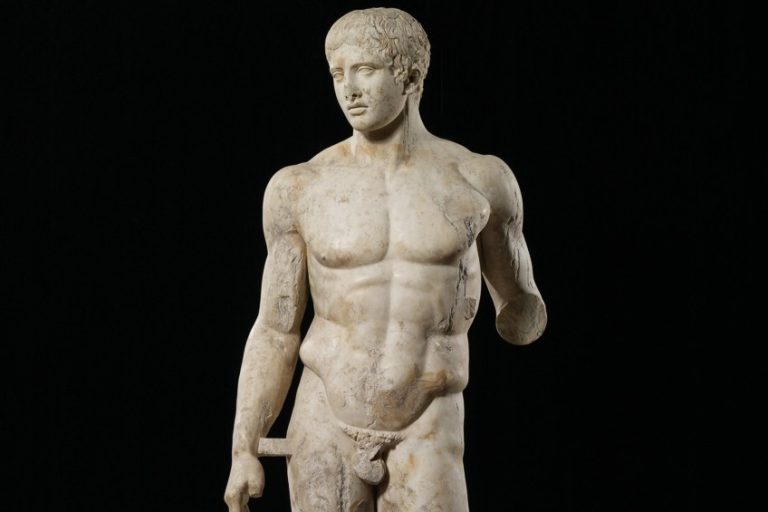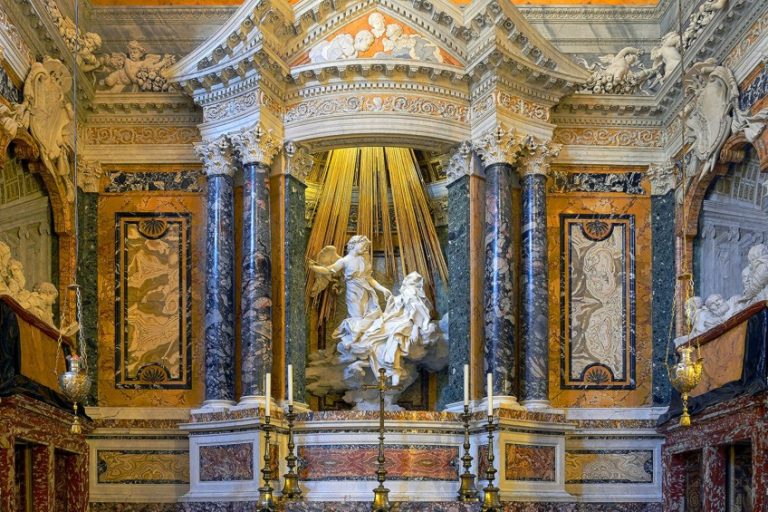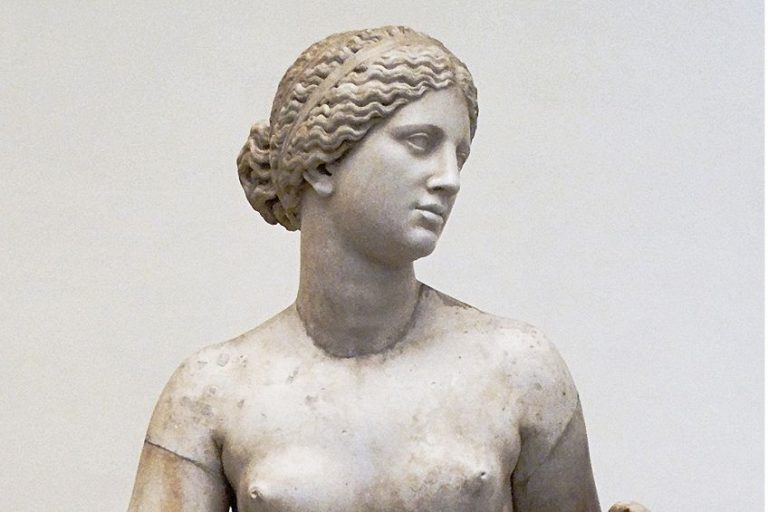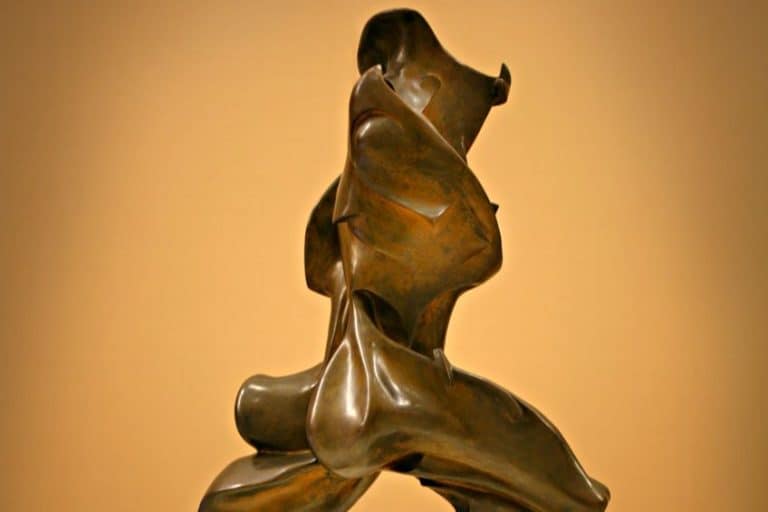“A Thousand Years” by Damien Hirst – A Sculpture Analysis
Damien Hirst’s A Thousand Years is a captivating and provocative artwork that delves into themes of life, death, and the cycle of existence. Created in 1990, this installation features a glass case housing a cow’s head with flies buzzing around it, alongside an insect-o-cutor that continuously zaps and kills the flies. The juxtaposition of life and death, the ephemeral and the enduring, prompts viewers to contemplate the fragility and inevitability of mortality. Hirst’s meticulous attention to detail and his use of contrasting elements make A Thousand Years a thought-provoking exploration of the human condition.
Key Takeaways
- A Thousand Years explores life and death using unconventional materials.
- The artwork challenges viewers with its vivid life cycle depiction.
- Hirst’s piece is crucial for understanding his influence in contemporary art.
The Conceptual Framework
| Artist | Damien Hirst (1965 – Present) |
|---|---|
| Date Created | 1990 |
| Medium | Various materials including steel, glass, flies, maggots, MDF, insect-o-cutor, sugar, water, and cow’s head |
| Genre | Contemporary Art |
| Period/Movement | Young British Artists (YBAs) |
| Dimensions (cm) | 213 x 427 x 213 |
| Series/Versions | Single version |
| Where Is It Housed? | The collection of Charles Saatchi |
| What It Is Worth | Estimated in the millions; significant cultural and artistic value |
Damien Hirst’s A Thousand Years is a striking piece within the realm of contemporary art that invites viewers to reflect on the cycle of life and death. Created in 1990, this artwork employs a unique combination of materials such as steel, glass, flies, maggots, and even a cow’s head. Its blend of unconventional elements serves as a fascinating visual metaphor for natural processes and existential themes.
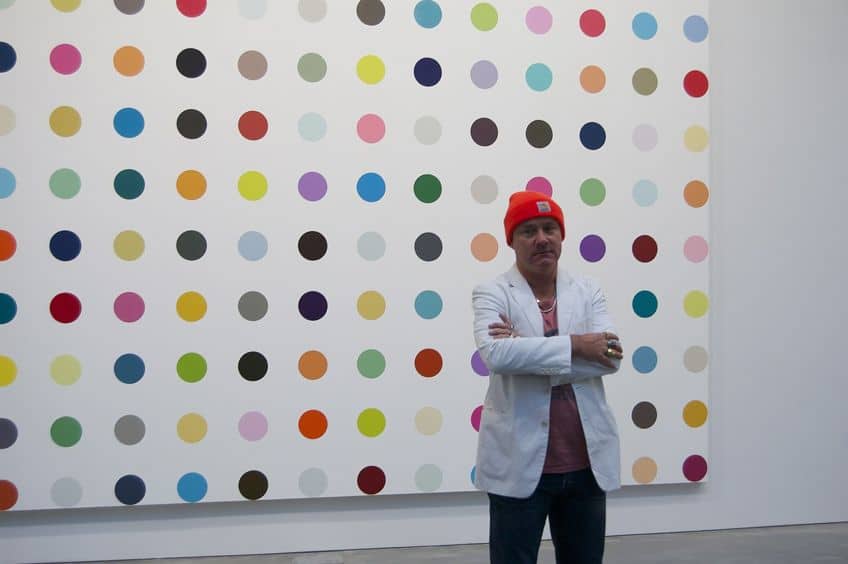
The artwork’s composition draws the observer into a microcosm where insects hatch, feed, and die, encapsulating a full life cycle within a controlled environment. By doing so, Hirst challenges the viewer to contemplate the inevitability and brevity of life. In A Thousand Years, Hirst’s bold approach to art transcends traditional boundaries, presenting a thought-provoking commentary on existence itself. Damien Hirst’s reputation as a leading figure in contemporary art is further solidified by A Thousand Years. This piece not only complements his broader artistic endeavors but also stands as a pivotal work that continues to provoke discussion and interpretation.
Understanding the intricate details and thematic depth of Hirst’s work enriches the appreciation of his innovative impact on modern art culture.
The Philosophical Undertones
A Thousand Years is a striking example of conceptual art that delves into existential themes. Hirst employs the technique of memento mori, a reminder of mortality, through the severed cow’s head and the life cycle of flies. The artwork’s use of maggots transforming into flies and later being killed by an insect-o-cutor symbolizes the fleeting nature of life. The glass and steel vitrine compartmentalizes this drama, making viewers confront the inevitability of death. Using materials like glass and steel emphasizes the cold, clinical approach to the subject matter. This detachment forces viewers to engage emotionally and intellectually with the cycle of existence, pondering their own mortality.
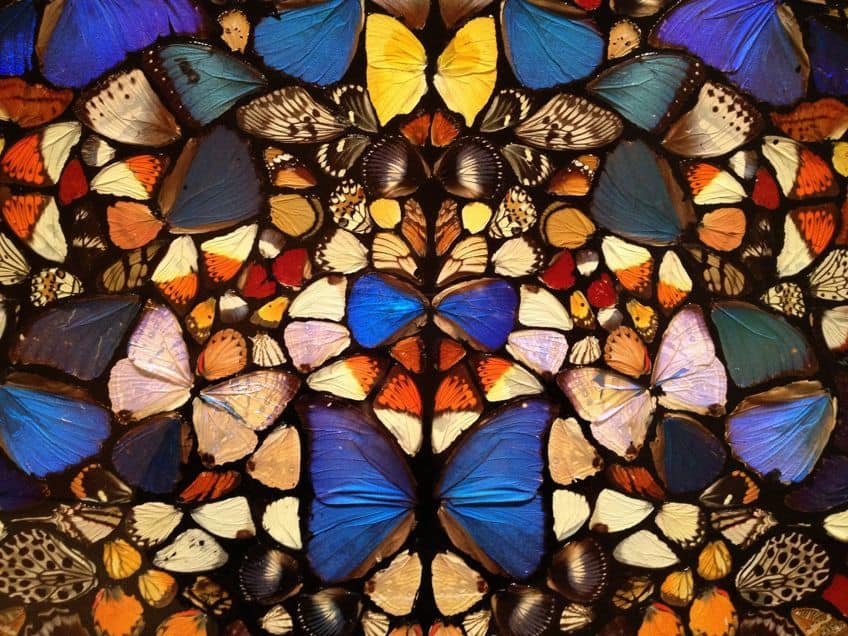
A Meditation on Life and Death
In A Thousand Years, Hirst creates a microcosm that starkly depicts life and death. The presence of both living maggots and a decaying cow’s head suggests the cycle of existence in a confined space. Life is ephemeral, represented by the short-lived flies. Death is ever-present, symbolized by the decaying head and the ultraviolet fly-killer. The controlled environment of the vitrine mimics the inevitability of life and death cycles found in nature. Hirst’s work is a meditation on how life and death are intertwined.
The use of everyday and often grotesque materials brings these grand themes into a tangible form, making viewers reflect on their existence.
Exploring the Full Spectrum of Hirst’s Career
Damien Hirst began his career in the late 1980s while studying at Goldsmiths College in London. His early work already showed an interest in life and death themes. He gained fame with A Thousand Years in 1990. This piece featured maggots turning into flies, feeding on a cow’s head, and being zapped by an electric fly-killer. It shows the cycle of life and death. In 1991, he exhibited The Physical Impossibility of Death in the Mind of Someone Living, featuring a shark submerged in formaldehyde. This work triggered discussions about mortality and preserved forms.
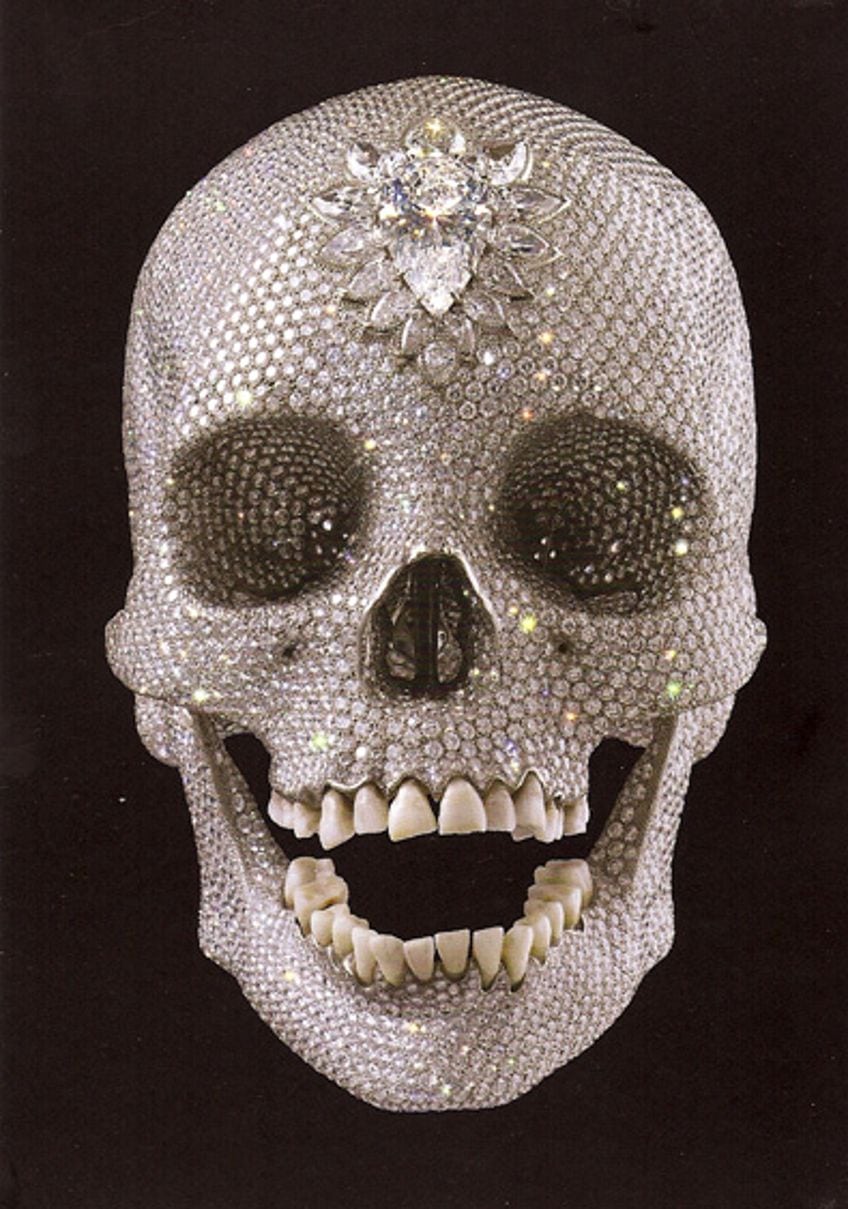
Another notable work is Mother and Child Divided from 1993. It displays a cow and its calf split in half and preserved in tanks, reflecting on themes of separation and death. In the early 2000s, Hirst created for the love of God, a platinum cast of a human skull encrusted with diamonds. This piece combined luxury and mortality. He also produced several Spot Paintings series, focusing on color and precision. While they do not match the intensity of his biological works, they exhibit his versatility. His more recent works, like the 2017 Treasures from the Wreck of the Unbelievable, showcase his talent in creating elaborate stories. These fake artifacts from a fictional shipwreck blur the lines between reality and imagination.
Through his varied career, Hirst has consistently pushed boundaries in contemporary art, making profound statements about existence.
Artistic Elements and Design
Damien Hirst’s A Thousand Years demonstrates a complex interplay between life and death. Its design uses various materials to create a microcosmic representation of natural cycles and decay.
Materials and Composition
The artwork utilizes diverse materials to craft its environment. The vitrine is made from steel and glass, forming a clear rectangular structure. Inside, it includes a cow’s head, flies, maggots, and an Insect-O-Cutor. The use of medium-density fibreboard (MDF) provides structural support. The presence of nutrient solutions, sugar, and water sustains the life forms within.
These choices emphasize both decay and renewal, highlighting the juxtaposition of life and death.
Symbolism of Components
Each component in A Thousand Years carries deep symbolism. The cow’s head represents the macabre reality of decay. At the same time, the maggots and flies symbolize the continuous cycle of life and death. The Insect-O-Cutor adds a layer of finality, killing the flies and completing their life cycle. Together, these elements serve as a metaphor for existential themes, illustrating how life perpetuates through death while maintaining an eerie, clinical environment. The use of transparent materials like glass allows viewers to witness these processes in real-time, making the artwork both dynamic and contemplative.
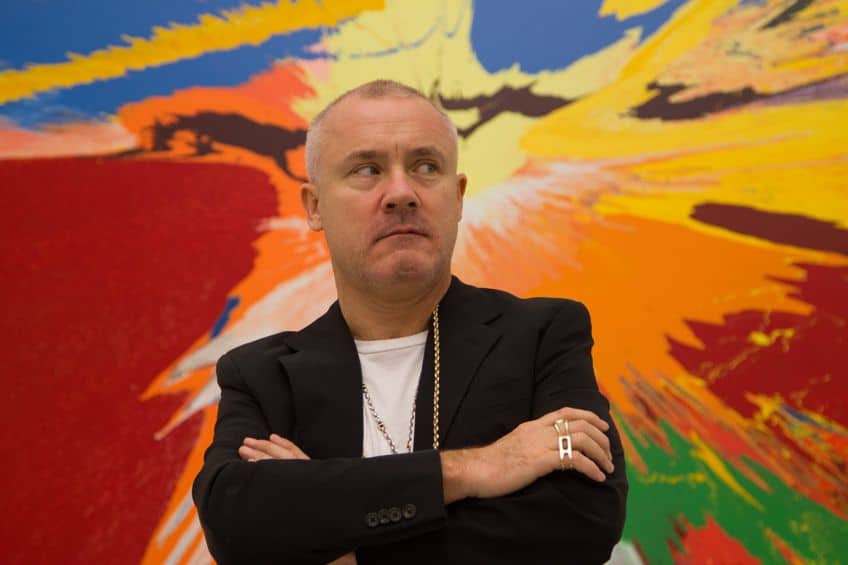
Connections to Other Works by Hirst
Damien Hirst’s A Thousand Years exemplifies recurring themes in his body of work, such as life, death, and the cycle of existence. Many of Hirst’s other pieces explore these ideas through varied mediums and techniques.
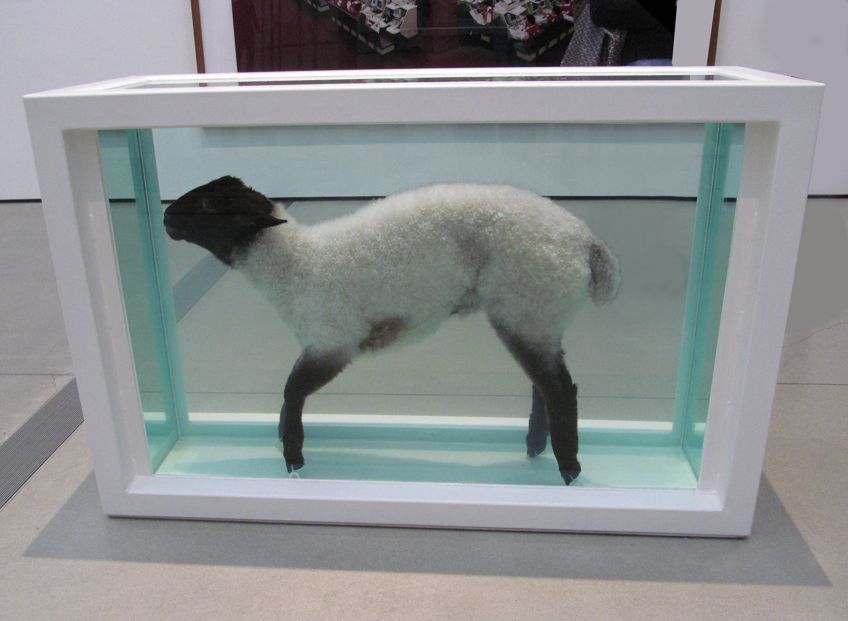
In and Out of Love
In and Out of Love is another significant piece by Damien Hirst. It fills an entire room with live butterflies, directly engaging with themes of life and transformation. This installation includes flowers and sugar water to sustain the butterflies, emphasizing their life cycle. The usage of live insects in In and Out of Love draws a parallel to the flies and maggots in A Thousand Years. Both artworks observe the natural processes of life and death.
Hirst’s fascination with the fragile beauty of butterflies contrasts with the grotesque decay in A Thousand Years, yet both incite contemplation on existence.
The Physical Impossibility of Death in the Mind of Someone Living
The Physical Impossibility of Death in the Mind of Someone Living is arguably one of Damien Hirst’s most famous works. It features a shark preserved in formaldehyde within a glass and steel vitrine. The piece’s stark depiction of death links it to the themes found in A Thousand Years. Just as A Thousand Years features a severed cow’s head undergoing decomposition, the shark installation captures a moment frozen in time, confronting viewers with mortality. Both use glass vitrines to exhibit elements of death, evoking a clinical yet provocative presentation. These works compel viewers to confront the concept of life and the reality of death in a visceral manner.
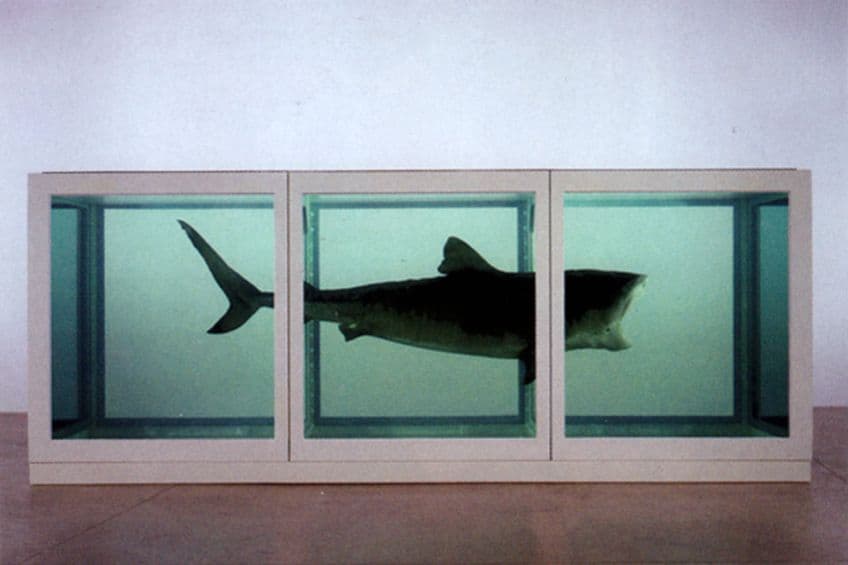
A Thousand Years challenges viewers to confront the complexities of life and death through its powerful imagery and symbolism. By juxtaposing the cycles of life with the relentless cycle of insect death, Hirst prompts us to contemplate our own mortality and the transient nature of existence. Through this thought-provoking installation, Hirst invites us to reflect on the fragility of life, the inevitability of death, and the enduring questions that surround the human experience. A Thousand Years stands as a testament to Hirst’s ability to provoke deep introspection and spark meaningful conversations about the profound mysteries of life and death.
Frequently Asked Questions
What Does A Thousand Years Signify in Damien Hirst’s Body of Work?
A Thousand Years symbolizes the inevitable nature of life and death, a recurring theme in Hirst’s art. The piece is a representation of the birth, life, and death cycle using visceral and striking imagery.
What Techniques Did Damien Hirst Employ in Creating A Thousand Years?
Hirst used various materials like steel, glass, maggots, flies, a cow’s head, and an insect-o-cutor. The use of these materials creates a controlled environment where the life cycle of flies is displayed in a hauntingly real way.
What Role Does the Life Cycle Play in A Thousand Years by Damien Hirst?
The life cycle is central to the artwork. Maggots hatch from eggs, feed on the cow’s head, become flies, and ultimately die, captured by the insect-o-cutor. This closed loop starkly illustrates life’s transience and fragility.
How Has A Thousand Years by Damien Hirst Impacted Contemporary Art?
A Thousand Years challenged conventional perceptions of art by introducing raw and unsettling themes. It has influenced contemporary artists to explore deeper and often uncomfortable truths about existence, cementing Hirst’s reputation as a pivotal figure in modern art.
Isabella studied at the University of Cape Town in South Africa and graduated with a Bachelor of Arts majoring in English Literature & Language and Psychology. Throughout her undergraduate years, she took Art History as an additional subject and absolutely loved it. Building on from her art history knowledge that began in high school, art has always been a particular area of fascination for her. From learning about artworks previously unknown to her, or sharpening her existing understanding of specific works, the ability to continue learning within this interesting sphere excites her greatly.
Her focal points of interest in art history encompass profiling specific artists and art movements, as it is these areas where she is able to really dig deep into the rich narrative of the art world. Additionally, she particularly enjoys exploring the different artistic styles of the 20th century, as well as the important impact that female artists have had on the development of art history.
Learn more about Isabella Meyer and the Art in Context Team.
Cite this Article
Isabella, Meyer, ““A Thousand Years” by Damien Hirst – A Sculpture Analysis.” Art in Context. June 27, 2024. URL: https://artincontext.org/a-thousand-years-by-damien-hirst/
Meyer, I. (2024, 27 June). “A Thousand Years” by Damien Hirst – A Sculpture Analysis. Art in Context. https://artincontext.org/a-thousand-years-by-damien-hirst/
Meyer, Isabella. ““A Thousand Years” by Damien Hirst – A Sculpture Analysis.” Art in Context, June 27, 2024. https://artincontext.org/a-thousand-years-by-damien-hirst/.




